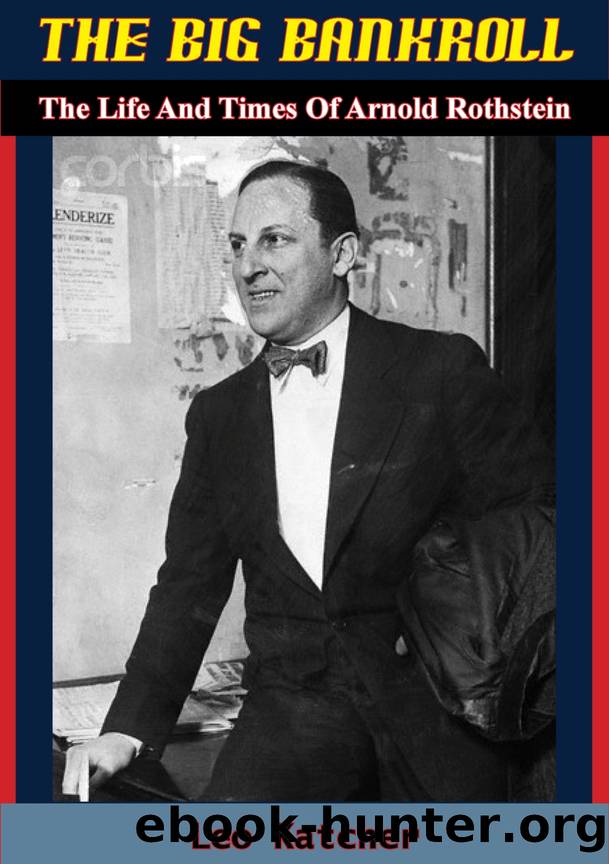The Big Bankroll by Leo Katcher

Author:Leo Katcher
Language: eng
Format: epub
Publisher: Pickle Partners Publishing
Published: 2016-01-26T00:00:00+00:00
Chapter 14âHe Popped Up Everywhere
If George Graham Rice did not coin the phrase âYou canât kill a suckerâ he certainly proved it. Rice, originally Jacob Simon Herzig, was one of the most successful bucket-shop operators in history. He must have had a sense of humor for, after swindling investors of hundreds of thousands of dollars and serving a jail term, he wrote a book titled My Adventures with Your Money, and then returned to bucketeering for twenty more âsuccessfulâ years.
Watson Washburn and Edmund DeLong, in their book, High and Low Financiers, expressed much the same conviction as Rice when they wrote, âThe sucker is the eternal optimist.â They used official records to substantiate their case.
The word âsuckerâ identified customers of bucket shops in both instances.
No official total of bucket-shop âtakeâ has ever been compiled. Nat J. Ferber, the New York American reporter who did more to expose bucketeers and their activities than any other newspaperman, estimated the take in his book, I Found Out as $6,000,000,000. His figures, however, included both cash extracted from suckers and the âvalueâ of the securities they supposedly owned.
This much is on the record. In New York State, in one five-year period, bucket shops went into bankruptcy owing their customers more than $212,000,000!
The bucket shop derives its name from those ancient markets where flour and grain were sold in buckets to the poor and needy. The wealthy could buy in larger amounts.
Bucket shops operated in all parts of the United States. They had their beginnings soon after the Civil War when railroad stocks were placed on the market and sold to thousands of investors. Such financiers as Daniel Drew, Jay Gould and Jim Fisk early set the standard for the bucketeers. They created artificial markets, issued public proclamations concerning; the value of their stocks, unloaded them at the same time they were doing this, and printed fresh stock as long as there was a demand.
This was larcenyâbut legal larceny.
By the turn of the century the bucket shops had become firmly entrenched. And they found themselves under attack not from the public but from more respectable brokerage houses. Many of these had started as bucket shops but, having prospered and found religion, the new converts got after their heathen brothers.
It took a third of a century for the legitimate brokerage houses, the New York Stock Exchange, and the big bankers who had connections with security houses to put the bucketeers out of business. When they did so. as the Black Committee which investigated Wall Street revealed, it was not a victory for the righteous over the wicked but for the stronger over the weaker.
The heyday of the bucketeers came during two periods, from about 1900 to 1907 and from 1917 until 1929. The bucketeers operated as successfully outside New York City as in it. The most successful had branch offices throughout the country.
The bucket shop was a cut-rate, bargain-basement securities supermarket. It operated on the layaway, or installment, plan, with very little down. Purchasers of stocks could buy on a margin as low as one point.
Download
This site does not store any files on its server. We only index and link to content provided by other sites. Please contact the content providers to delete copyright contents if any and email us, we'll remove relevant links or contents immediately.
| Espionage | Hoaxes & Deceptions |
| Murder & Mayhem | Organized Crime |
| Serial Killers | White Collar Crime |
Mindhunter: Inside the FBI's Elite Serial Crime Unit by John E. Douglas & Mark Olshaker(9206)
Wiseguy by Nicholas Pileggi(5674)
Room 212 by Kate Stewart(5041)
Hitman by Howie Carr(5023)
Secrecy World by Jake Bernstein(4652)
Killers of the Flower Moon: The Osage Murders and the Birth of the FBI by David Grann(4387)
Papillon (English) by Henri Charrière(4199)
Breaking Free by Rachel Jeffs(4175)
Killers of the Flower Moon by David Grann(3971)
Say Nothing by Patrick Radden Keefe(3904)
American Kingpin by Nick Bilton(3760)
The Secret Barrister by The Secret Barrister(3615)
Molly's Game: From Hollywood's Elite to Wall Street's Billionaire Boys Club, My High-Stakes Adventure in the World of Underground Poker by Molly Bloom(3487)
Mysteries by Colin Wilson(3398)
In Cold Blood by Truman Capote(3311)
Signature in the Cell: DNA and the Evidence for Intelligent Design by Stephen C. Meyer(3075)
I'll Be Gone in the Dark by Michelle McNamara(3024)
Rogue Trader by Leeson Nick(2980)
Bunk by Kevin Young(2950)
